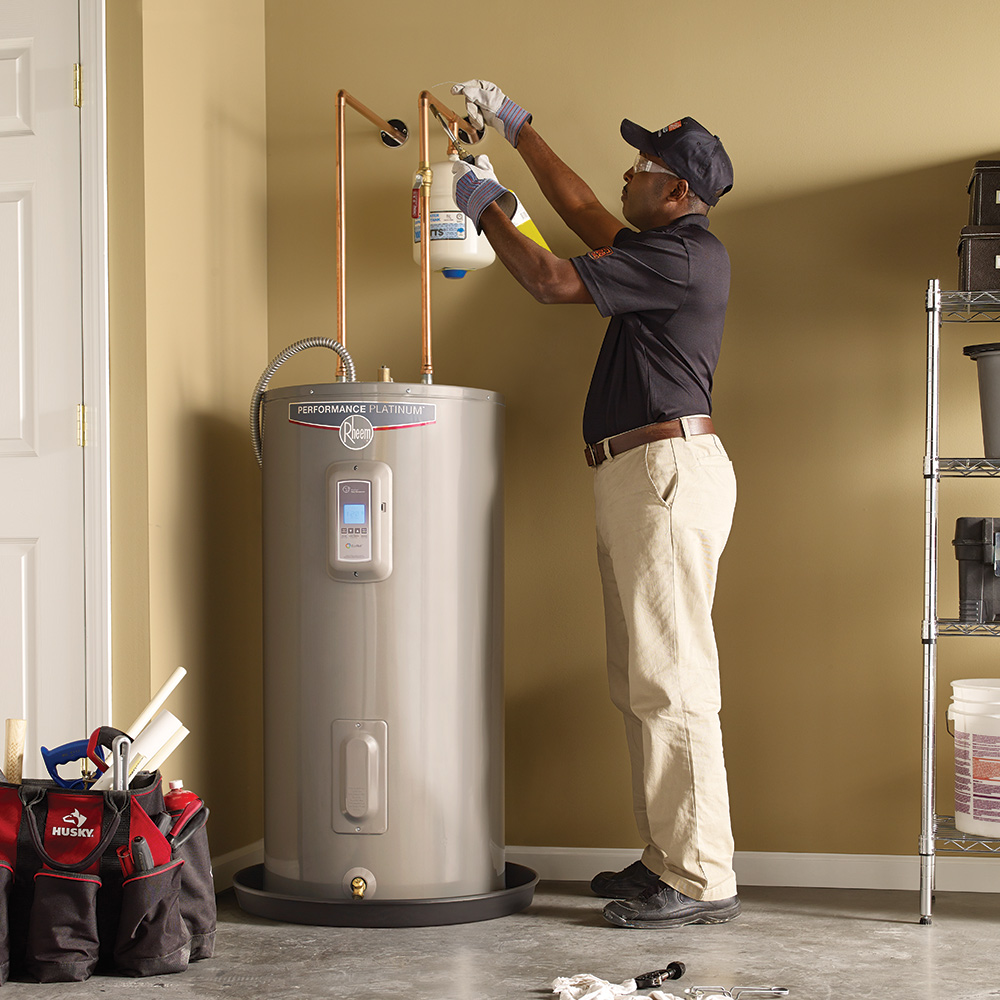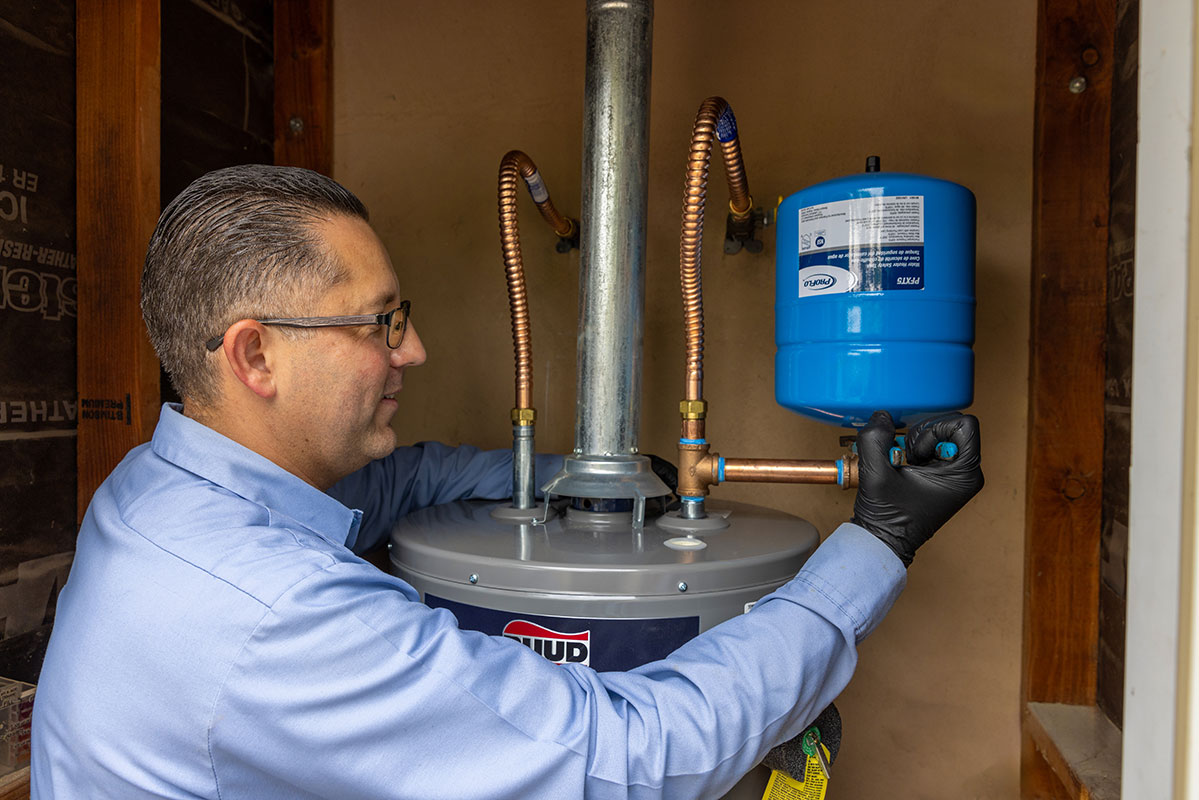Water Heater Installation for Enhanced Hot Water Efficiency and Performance
Water Heater Installation for Enhanced Hot Water Efficiency and Performance
Blog Article
Full Overview to Water Heating UnitInstallation and Substitute
Understanding the ins and outs of water heater installation and substitute is crucial for house owners looking for to make certain effectiveness and dependability in their warm water supply. From picking the proper kind and dimension to executing a smooth setup process, a number of aspects have to be thought about to prevent typical risks.
Types of Hot Water Heater
When thinking about water heater setup and replacement, it is crucial to comprehend the different kinds of water heaters offered on the market. The most usual kinds include container hot water heater, tankless hot water heater, heatpump hot water heater, and solar hot water heater.
Container hot water heater are conventional systems that save a certain volume of warm water, making them easily offered when required. They are generally more economical in advance but might sustain higher energy costs over time as a result of heat loss. On the other hand, tankless hot water heater provide warm water as needed, removing the need for storage. They are energy reliable and can conserve space, however their initial costs are usually greater.
Heatpump water heating systems make use of electrical power to move warm from the air or ground to warm water, using substantial power financial savings yet needing more area and certain installment problems. Lastly, solar hot water heater harness solar power to warm water, giving a green option with possible long-term cost savings, although they typically need a back-up system for gloomy days.
Comprehending these options makes certain notified decisions regarding installation and replacement, catering to specific needs and preferences.
Choosing the Right Dimension
Choosing the proper dimension for a water heater is vital to guarantee ideal performance and performance. A device that is as well little will have a hard time to fulfill family needs, causing inconsistent warm water availability and enhanced power intake. On the other hand, an extra-large hot water heater can result in unnecessary power waste and higher energy bills.
To identify the right size, consider the family's top warm water use. This can be computed based on the variety of occupants and their regular warm water requirements. As an example, a household of four might require a water heating unit with a capacity of 50 to 80 gallons, depending upon the use patterns, such as simultaneous showers and laundry.
In addition, evaluate the healing price, which gauges just how quickly a heater can restore warm water after it has actually been used. For tankless models, concentrate on the flow rate, gauged in gallons per min (GPM), to guarantee it meets the home's synchronised need.

Installation Process Review

Following, the old device must be disconnected and gotten rid of, taking treatment to follow neighborhood codes and policies pertaining to disposal. When the old unit is out, the brand-new water heater can be placed in position. This step includes attaching the water supply lines, guaranteeing that all fittings are secure and leak-free.
After developing water links, it's vital to link the power supply, whether electrical or gas, following the supplier's guidelines meticulously. As soon as all connections are made, the system ought to be loaded with water, and the power can be transformed back on. Lastly, it is essential to look for leaks and make certain the water heater is operating correctly prior to completing the installment process.
Typical Installation Mistakes

One more constant blunder is overlooking to follow regional codes and regulations. Falling short to stick to these requirements can not just lead to security threats yet may also result in pricey fines or the demand for pricey reinstallation.
Stopping working to protect connections or using the wrong type of installations can lead to leaks and water damages. By preventing these typical installment errors, homeowners can ensure their water heating unit runs safely and efficiently, optimizing efficiency and longevity.
Upkeep Tips for Longevity
Appropriate maintenance of a hot water heater is important for its longevity and optimum efficiency. Normal assessments and maintenance can prevent pricey repairs and prolong the appliance's lifespan. Begin by checking the temperature level setup; it needs to typically be set between 120 ° F and 140 ° F for optimal power effectiveness and safety.
Every 6 months, purge the tank to remove debris buildup, which can hinder home heating efficiency and cause corrosion. To do this, switch off the heating system, connect a pipe to the drain shutoff, and let the water run up until it is clear.
When they are worn away,Anode poles need to be examined every year and changed. These poles help avoid tank deterioration by drawing in destructive elements in the water.
Furthermore, examine the stress alleviation shutoff regularly to ensure it is working appropriately. This shutoff is crucial for avoiding too much stress accumulation within the tank.
Lastly, think about scheduling an expert upkeep check every couple of years for extensive inspections and maintenance. By adhering to these upkeep suggestions, house owners can significantly improve the performance, security, and life expectancy of their hot water heater, ensuring reputable warm water for many years to find.
Conclusion
Finally, proper installment and maintenance of hot water heater are essential for making sure performance and longevity (pipe repair). Picking the suitable type and size, adhering to installment standards, and preventing common blunders significantly contribute to ideal efficiency. home Normal upkeep checks and professional maintenance aid endure capability and stop pricey repair work. By understanding these essential facets, house owners can accomplish a trusted warm water supply while reducing possible problems connected to water heater operation.
Understanding the ins and outs of water heating system installment and substitute is critical for house owners looking for to make sure performance and reliability in their warm water supply.Container water heating company website systems are typical systems that store a particular volume of hot water, making them easily offered when needed. In contrast, tankless water heating systems supply hot water on demand, getting rid of the requirement for storage. Choosing a water heating unit that is either as well small or also large can lead to inadequacies, resulting in poor hot water supply or excessive power consumption.
By understanding these important elements, homeowners can attain a trustworthy hot water supply while lessening prospective concerns connected to water heating unit operation. gas leak repair.
Report this page